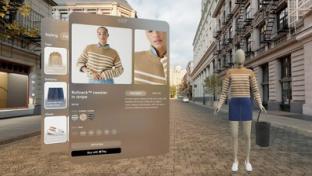This Groundhog Day, don’t get spooked by a tech project’s 'shadow'
Retailers often hesitate to implement new solutions due to fears over lingering complexities.
It’s the time of year we celebrate Groundhog Day, when the groundhog pops out of his hole and predicts how much longer winter will last, based on whether he is scared back to his den by the sight of his shadow. Retailers are often frightened away from new technologies by perceived "shadows" their deployment casts.
Certainly, no technology should ever be implemented without a thorough review to ensure it properly fits a retailer’s specific strategic needs and will produce some sort of ROI. But retailers should also avoid letting any of the following shadows nix an otherwise promising technology project.
Customization/Integration
One shadow cast by new technology implementations is the need for customization and integration. Even the most vanilla enterprise platform or cloud-based turnkey solution will require some amount of tuning and modification to cohesively fit a specific retailer’s architecture.
Fortunately, customization is a much simpler process than it used to be. The proliferation of cloud-based system means that solutions can be easily adapted, modified, scaled or updated on an as-needed basis, often remotely by the hosting technology provider.
A proliferation of APIs that seamlessly connect disparate technologies also eases many customization scenarios, and the ability of generative AI to automatically write code is also a potential aid to adapting solutions for a particular environment.
Even for solutions requiring significant customization, most technology providers maintain a roster of certified integration partners that have the expertise to handle the heavy lifting involved in making sure an application works properly within a given framework.
Training
It’s no secret that most retail organizations do not have a large amount of time, personnel or funding available to dedicate to training employees on how to use new technology solutions. This is especially true for applications that will be used by frontline workers, who often have turnover rates approaching 100%.
However, evolution in technology has also produced advancement in the resources available for technology training. Many frontline employee solutions are now delivered by intuitive apps, with training provided via the same interface.
And for more complex workplace solutions, the emergence of videoconferencing and virtual reality technologies has largely eliminated the need to physically bring employees together for in-person training sessions. One example is VR-based training Walmart has conducted using Oculus Rift and Oculus Go headsets.
Newness
Retail is historically something of a laggard industry when it comes to adopting new technologies, although that trend has been shifting in recent years as more digital natives join the workforce and society in general becomes more accepting of leading-edge technology, with generative AI as a prime example. But retailers still often retain hesitancy to be among the first users of a new solution.
As stated earlier, no retailer should ever implement a solution simply because it is new or trendy. But they should also not automatically decline to be an early adopter of a technology that fits into their larger enterprise operation.
If you have met me in person, you likely have heard the anecdote I’m about to share and I apologize for repeating it. In the early 2000s, I spoke with the chief merchandising officer of a successful regional apparel retailer who had no interest in the then-new class of algorithm-based pricing and markdown optimization solutions starting to take hold in retail.
"Why do I need a computer to tell me what to charge for a product?" he scoffed. "If it doesn’t sell, I cut the price. If it still doesn’t sell, I lower it again."
That chain, which had operated profitably for over 50 years, was gone by 2005. Sometimes the pioneers reap the rewards.







